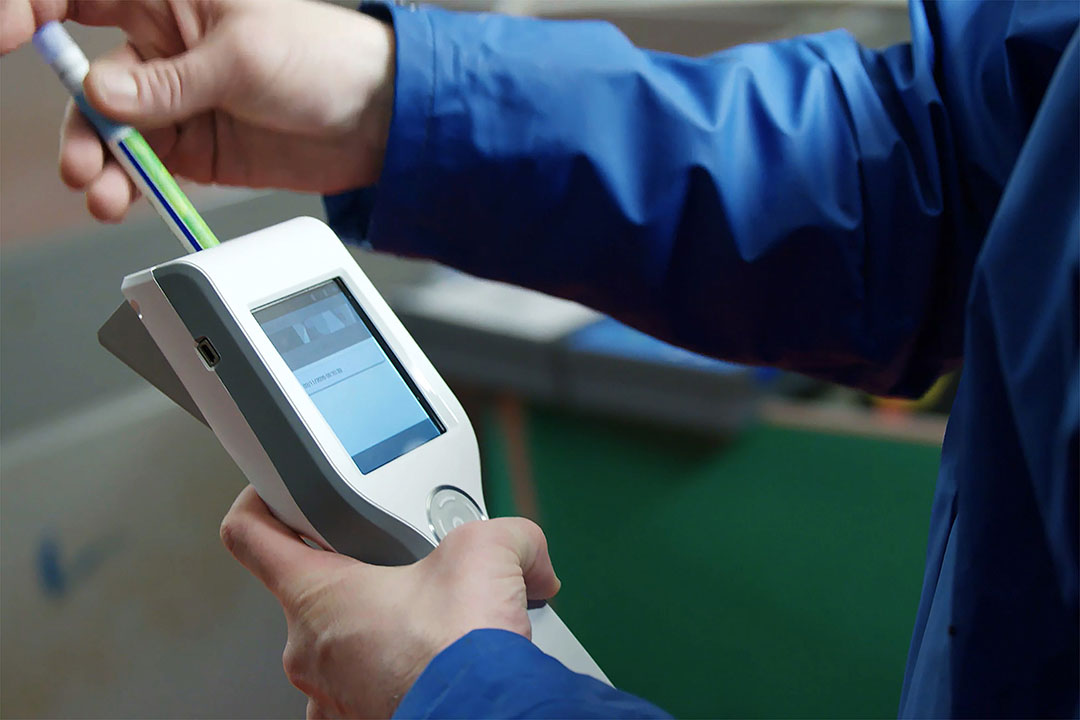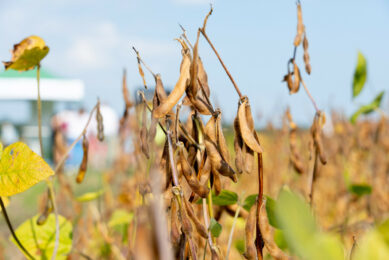Using real-time water analysis to control contamination risks

Clean drinking water is fundamental for optimal health and performance. However, drinking water systems are very susceptible to chemical and microbiological contamination. Contaminated drinking water negatively effects the health and production parameters of the herd. Removing and controlling the removal of all organic matter in your drinking system is key to ensure optimal biosecurity.
Microbiological contamination causes problems when it contains pathogenic microorganisms that infect animals or when microorganisms create a biofilm that will finally block (drinking) water lines. If the biofilm remains present in the pipeline after disinfection, it may still contain hazardous micro-organisms and new incoming pathogens can use this biofilm environment to hide and further multiply.
Obtaining reliable results
The efficacy of a cleaning and disinfection protocol can be monitored by measuring the microbial load of a water sample. The gold standard for microbiological water analysis is by incubating water samples on suitable agar culture plates. However, in order to obtain reliable results it is necessary that the right equipment is used by educated laboratory personnel. Unfortunately this analysis is very time-consuming and may take weeks to get the results, and the transport requirements for the water samples are difficult to fulfil.
Intracare offers an alternative which provides a quick, easy and reliable measurement: the Intra Hygiene Quick Scan. This device measures the level of adenosine triphosphate (ATP) in water samples or on surfaces. ATP is an important carrier of chemical energy in living cells. Quantification of the ATP level would in theory thus provide an indication of the number of living organisms in a sample. ATP measurements are widely known in the food industry for water quality control. This article expands on the accuracy of ATP measurements and how this can be included in the farm managers toolbox.
Collecting evidence for the theory
The correlation between an RLU value and its microbiological load was first demonstrated in a laboratory study (Figure 1) in which the linearity between the concentration of a homogenous standard suspension of a single bacteria species (Pseudomonas aeruginosa) and its corresponding RLU value was investigated.
A correlation coefficient (r2) can range between 1 and -1, where 1 indicates a perfect correlation, 0 no correlation at all, and -1 a perfect negative correlation. The obtained correlation coefficient of 0.994 indicates the existence of an almost perfect positive correlation between the number of bacteria in these water samples and their corresponding RLU value.
Figure 1 – Correlation between the concentration of Pseudomonas aeruginosa (cfu/ml) and ATP levels (RLU).

Measurements before and after cleaning and disinfection
In practice, this correlation can be used to visualise differences in water quality before and after treatment. A publication by a renowned innovative French Veterinary Company confirmed the correlation between ATP levels and microbiological count before and after cleaning and disinfecting with Intra Hydrocare in 8 pig farms. Intra Hydrocare is based on ultra-stabilised hydrogen peroxide, and, thanks to the slow release, is able to kill off all the pathogens floating in the water as well as to entirely remove the biofilm present in the water line. Using 300 RLU and 100 cfu/ml as upper limits for good animal drinking water quality, at least 7 of the 8 (=87.5%) farms ended up in the same category.
In practice it is more common to compare samples from a single location with each other to exclude possible interfering factors. Table 1 illustrates the levels before and after treatment of the drinking water lines in a single pig farm having 750 sows and 2,500 piglets. These data clearly demonstrate the power of the different analysis techniques to quantify the effect of water cleaning and disinfection.
How to use this in practice?
The results from the paper illustrates that RLU measurement with the Intra Hygiene Quick Scan is an accurate analytical technique for a quick and easy indication of water quality.
Under controlled laboratory conditions, an excellent positive correlation exists between the number of microorganisms and RLU values. Under field conditions, water samples are more heterogeneous and other factors may influence the RLU measurement. However, RLU measurements are an valuable starting point to determine the pathogen load of the water within seconds. Based on the RLU value of the incoming
water, a customised water treatment protocol can be implemented immediately (Table 2).
Increase efficiency and improve animal health
Intracare can inform you of the availability of the Quick Scan in your region. In case it is not available for your farm, an alternative method is obtainable to measure the water quality, using measurement strips. This makes water quality control and dosage verification achievable and affordable for every farmer worldwide.
Authors: Gerwen Lammers, PhD and Daisy Roijackers, MSc, Intracare







